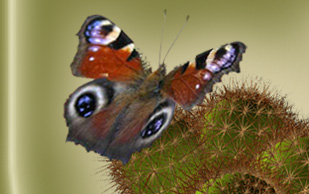Diary of the traveller.
Eugeny Safronov
The Southwest USA
Part 5
We spent a couple miles and stopped at the softwood forest. One would think it's time for mushrooms, but not! There were a lot of cactuses, blossoming pediocactuses and very nice opuntias.
PEDIOCACTUS simpsonii RUS 311
OPUNTIA rutila RUS 311
We found cushions of echinocereuses along the road. We saw many flowers but there was a private ownership again. The range of search was constrained.
ECHINOCEREUS mojavensis RUS 312
There was early evening, time to put up tents, but we decided to visit one more point.
OPUNTIA rubrifolia, ECHINOCEREUS mojavensis (RUS 313)
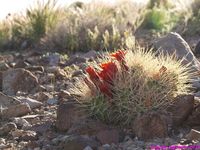
ECHINOCEREUS
mojavensis
RUS 313 |
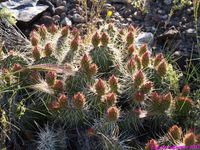
OPUNTIA
rubrifolia
RUS 313 |
We spent a night at Panguitch. Nothing signified a difficult night. We knew about the future fall of temperature. But we didn't expect such an effect. The locals knew about the fall of temperature too. And all the night they showered their sowings by diffusers to protect them from the frost. I waked up in wet tent as a result. Humidity was 100% and the temperature was + 1C . We had to dry our tents at the next stop.
We reached Bryce Canyon National Park again. (Point O on the map).
That natural amphitheater was created by the centuries-long erosion. We began to accustom to beautiful views from the viewing platforms.
We left behind the fascinating “architecture” of Utah State . Some miles to the south, then to the south-east and we are at Arizona State again. We turned from the mountain road to the softwood forest. There were no mushrooms, but there were cactuses again: ECHINOCEREUS mojavensis, ESCOBARIA(CORYPHANTHA) vivipara v.kaibabensis, PEDIOCACTUS paradinei. (RUS 315)
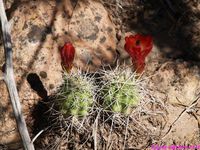
ECHINOCEREUS
mojavensis
RUS 315 |
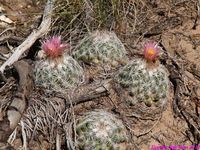
ESCOBARIA
(CORYPHANTHA)
vivipara
v.kaibabensis
RUS 315 |
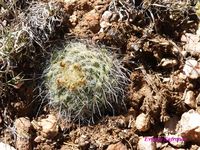
PEDIOCACTUS
paradinei
RUS 315 |
We reached the very beginning of Grand Canyon after a long journey.
We went down the valley drive along the Canyon. After some time we saw the stormy and meandering Rio Colorado with very cuspate shores.
There were many stone sculptures along the road that were ready to move any moment.
We moved along the stream to find a bridge. We needed to cross it and reach another shore.
The river looked less rapid than before. We saw the bushes of Opuntia basilaris along the shore.
By evening the road turned to Utah again. Our point was the Monument Valley Navajo Tribal Park . It is on border of states Utah and Arizona . We took our overnight stay at Goulding's Lodge camp. We set an alarm clock to 4.30 AM. We needed to have time for early morning photo session. There was + 11C when we waked up and many stars were shining in the sky. The camp was sleeping. We reached the place with headlights switched on. The East became lighter and the silhouettes of arcs appeared, but the cameras could not work yet. Finally the first photos were made. More and more cars with new photographers were arriving. Sunrise was coming. The nature was filling by new colors. The valley was waking up.
And so the sun appeared and began to climb up the sky as an alpinist, clambering to the monuments. And we had to go back to our work. The Point 316 was 20 km far from us. The Sclerocactuses and other had waited us on the disintegrated sandy platforms. (Point P on the map). SCLEROCACTUS arviflorus ssp.havasupaiensis, OPUNTIA erinacea v.ursina. (RUS 316)
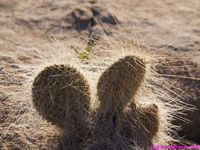
OPUNTIA
erinacea
v.ursina
RUS 316 |
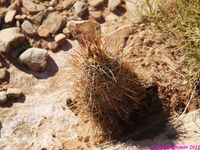
SCLEROCACTUS
parviflorus
ssp.havasupaiensis
RUS 316 |
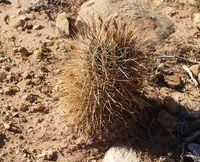
SCLEROCACTUS
parviflorus
ssp.havasupaiensis
RUS 316 |
But the final countdown of our trip was ticking without mercy. We turned around and moved to the Pacific. We made a stop near a small tributary - Little Colorado. The huge water drain starts here, from the cracked valley. We found many Echinocactus polycephalus v.xerantemoides around it. RUS 317 (Q ).
And then, we headed to Grand Canyon National Park , maybe, the most famous Park of the USA. It’s one of the Wonders of the World. I visited Canyon for the second time. First time I was in the other part of it. And all the time I was surprised by the greatness and wilderness of that place. People look like crumbs against that giant.
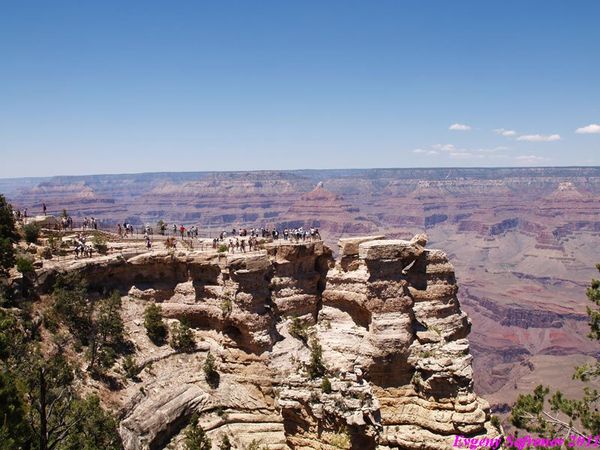 |
The Pacific Ocean was coming closer every minute. I kept in my mind soon meeting with Moscow . We reached a plain road with not-typical marks. It was U.S. Route 66 (also known as the Will Rogers Highway (named after the humorist), and colloquially known as the Main Street of America or the Mother Road or The Most Famous Road in the World. One of the original U.S. highways, Route 66 was established on November 11, 1926. U.S. 66 was officially removed from the United States Highway System on June 27, 1985 after it was decided the route was no longer relevant and had been replaced by the Interstate Highway System. Route 66 has also been a fixture in popular culture. The crux of the story in Disney's 2006 animated film Cars revolves around the decline of the fictional Radiator Springs, a once-booming ghost town that fell into the doldrums when its mother road, Route 66, was bypassed by the Interstate. The first Mac Auto was opened here too. There is little difference between R66 and other roads, but locals have special feelings about it. (Aclinal part of the road near point R).
After Kingman town we turned right. We reached Golden Valley where we could enjoy the natural cactuses park. The plants looked like they were carefully sowed. (RUS 318)
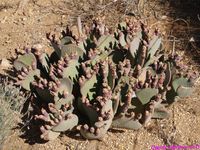
OPUNTIA
basilaris
RUS 318 |
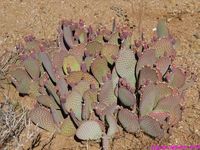
OPUNTIA
basilaris
RUS 318 |
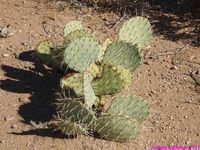
OPUNTIA
delicata
RUS 318 |
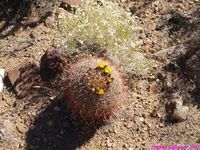
FEROCACTUS
wislizenii
RUS 318 |
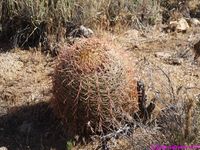
FEROCACTUS
wislizenii
RUS 318 |
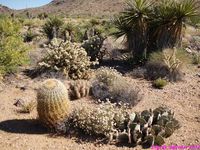
FEROCACTUS
wislizenii
RUS 318 |
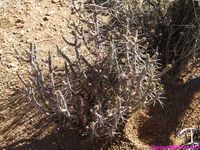
CYLINDROPUNTIA
ramosissima
RUS 318 |
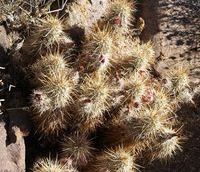
ECHINOCEREUS
engelmannii
var. chrysocentrus
RUS 318 |
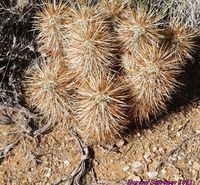
ECHINOCEREUS
engelmannii
var. chrysocentrus
RUS 318 |
December 2011.
To be continued... |
